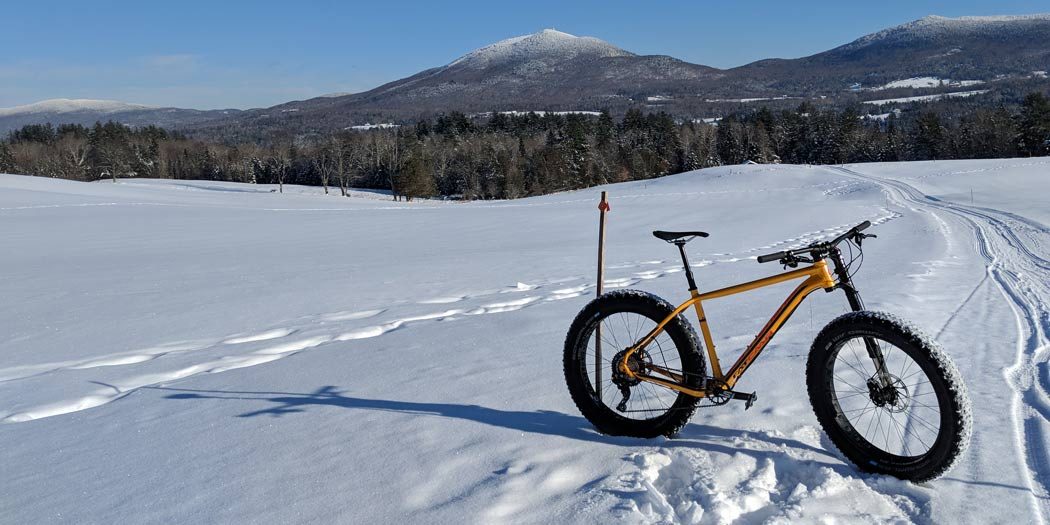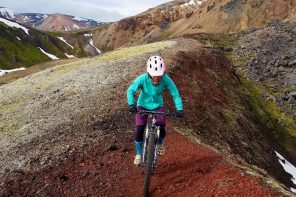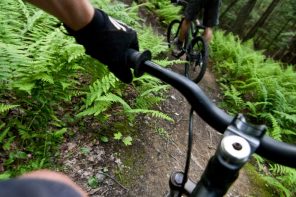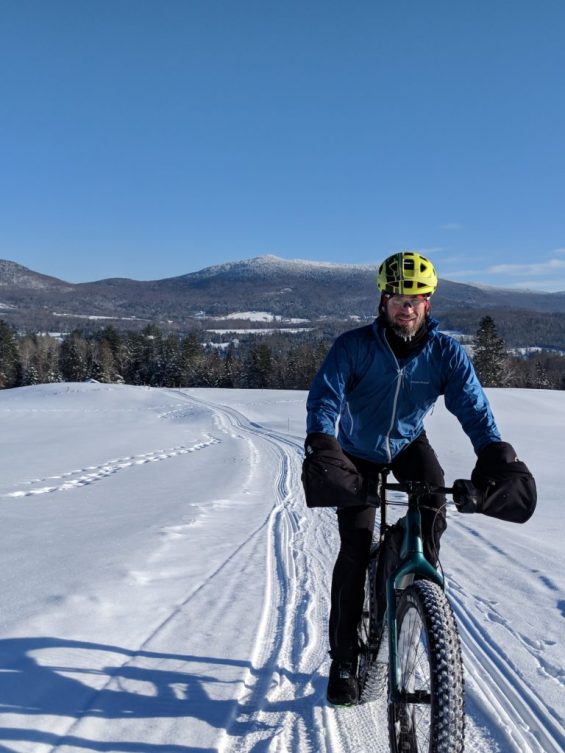
Originally posted on kingdomexperiences.com
By: Tom Seymour
Adventure can mean many things. Often when we think of adventure in the context of cycling, our minds immediately go to far off places and big landscapes. But adventure can happen anywhere at any time and fatbikes are a great tool for adventure seekers everywhere. This being January in Vermont, I’m mostly thinking about winter adventures right now. Winter is great here in the NEK, but the temperatures can vary quite a lot and quickly. In this article I will discuss some ways to stay warm and comfortable on your next winter time fat bike adventure.
1: Know your abilities and plan accordingly.
According to a 2014 article in Men’s Health, fat biking can burn up to 1,500 calories an hour. While we all won’t be burning that many calories every hour we are on a fat bike, we can look at this information as a gauge of how much work our bodies may have to do during our next fat bike adventure. The first step I take when planning for a fat bike ride is to look at the weather and the trail reports and use this information to plan my ride and to choose the clothing I will use to regulate my body temperature. If you are new to cold weather cardio, I recommend shorter, close to home rides to learn how your body and equipment respond to various temperatures.
2: Layers!!
Most of us are familiar with the concept of layering your clothing to stay comfortable in cold weather. When exercising in sub freezing temps, the right layers are key to staying warm and as dry as possible. The first layer to consider is your base layer. Whether you choose a mid weight or lightweight layer, make sure it is form fitting to allow the base layer to move the sweat that you will inevitably produce away from your skin.The next layer will be either the mid or outer layer; it will usually have some type of insulation and if used as an outer layer should have some type of wind protection. Mid layers should be some type of breathable insulation and should fit small enough so that some type of shell can be worn over it. Though fat bike specific clothing is now being offered, most cross country ski clothing works well as does winter hiking clothing.
3: Wind protection
Even though winter riding tends to be slower than summer time riding, we are still moving through the cold air at pace fast enough to make wind protection important. Like the rest of our clothing, exactly how much wind protection we need depends upon the temperature and the type of riding being done. For example; on a 30 degree day in the woods, wind resistant garments are not needed nearly as much as the same day on back roads where speeds are higher and much of the tree cover is lost. Again, fat bike specific clothing is now becoming available but other types of winter clothing can work well and in a pinch, a rain jacket worn over an insulating layer or two can work to block the wind. If shopping for a new garment, look for one with a wind-proof/resistant front and a more breathable back. Also look for stretchy material to allow for full range of motion and make sure it is large enough to accommodate an insulating layer worn underneath.
4: Hands, feet and head
These are areas that a very important to take care of; not many things can change the tone of your adventure like excessively cold hands or feet. For most people, a thin winter hat under your existing bike helmet will work well, you can also pair this with a neck warmer or use a balaclava for an all-in-one solution. When Temperatures dip below 10 degrees fahrenheit, an insulated alpine ski helmet can keep you warmer and keep more of the wind off of your head. Gloves could be an entire post by themselves! To keep it simple, I recommend thin glove liners and a good warm glove that blocks the wind. If your hands are particularly sensitive to the cold, consider pogies(see next point) and/or temporary chemical hand warmers. For shoes, you can choose from some fat bike specific offerings from various brands or use an insulated winter boot with a non aggressive tread that will allow good contact with the pedal. If you are prone to cold feet, you can use chemical toe warmers or there are even heated socks available.
5: Dress your bike: frame bags and pogies
Two last items to consider to make your next fat bike adventure more comfortable are pogies(handlebar mounted mittens) and a frame bag. Pogie designs vary but they all focus on one thing, sheltering your hands from the wind and cold. Pogies are not only great for warmer hands at lower temperatures, but they also allow the use of a much thinner glove when the temperatures rise allowing for a more natural feel of the brake and shift levers. Some pogies include pockets on the inside to use for snack or hand warmer storage. Framebags fit in the front triangle of your bike’s frame an can provide storage for tools, snacks, extra clothes and water. In fact, a frame bag in conjunction with an insulated water bottle is the best way I’ve found to keep water from freezing during colder rides. By replacing a back pack with a frame bag, we lower our center of gravity for a more stable ride and have the best solution for maintaining an unfrozen water source.
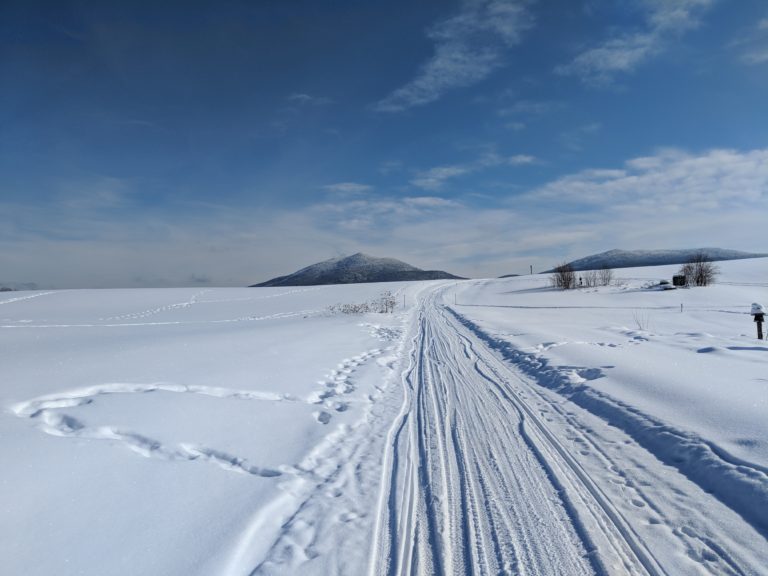
 Kingdom Cycling & Experiences are purveyors of authentic mountain & gravel cycling experiences in New England for all ages and abilities! We also specialize in mountain bike kids camps, skills clinics and mechanical clinics.
Kingdom Cycling & Experiences are purveyors of authentic mountain & gravel cycling experiences in New England for all ages and abilities! We also specialize in mountain bike kids camps, skills clinics and mechanical clinics.

